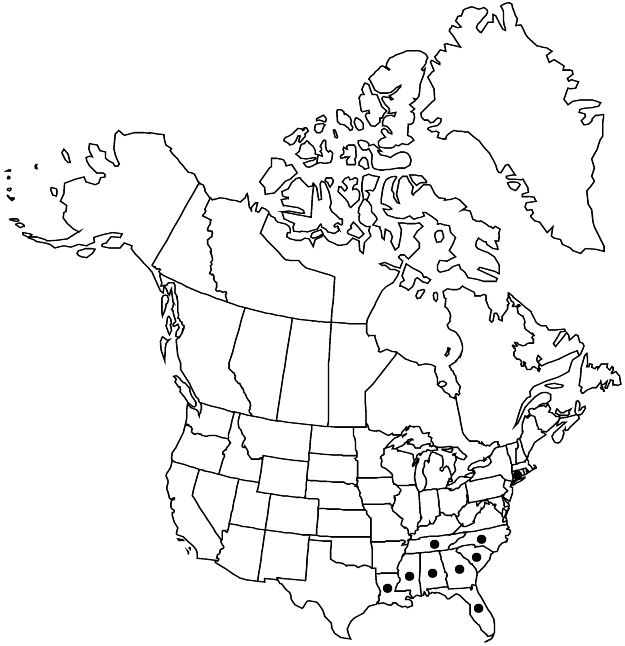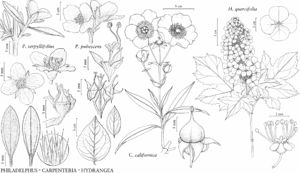Difference between revisions of "Hydrangea quercifolia"
Travels Carolina, 382, plate 7. 1791.
FNA>Volume Importer |
FNA>Volume Importer |
||
| Line 55: | Line 55: | ||
|publication year=1791 | |publication year=1791 | ||
|special status=Selected by author to be illustrated;Endemic | |special status=Selected by author to be illustrated;Endemic | ||
| − | |source xml=https://jpend@bitbucket.org/aafc-mbb/fna-data-curation.git/src/ | + | |source xml=https://jpend@bitbucket.org/aafc-mbb/fna-data-curation.git/src/f6b125a955440c0872999024f038d74684f65921/coarse_grained_fna_xml/V12/V12_664.xml |
|genus=Hydrangea | |genus=Hydrangea | ||
|species=Hydrangea quercifolia | |species=Hydrangea quercifolia | ||
Revision as of 18:19, 24 September 2019
Shrubs, 10–20 dm. Twigs densely tomentose, trichomes brown or orangish brown, sometimes white. Leaves opposite; petiole (1–)1.5–8(–12.6) cm, densely tomentose; blade suborbiculate to ovate, (2.8–)7–26.4 × (2.6–)6.5–26.5 cm, (3–)5(–7)-lobed, base truncate to cuneate, margins coarsely serrate, apex acute to acuminate, abaxial surface grayish, pilose to tomentose, trichomes at 40× either smooth, 1–4 mm, or tuberculate, 0.4–1 mm, adaxial surface green, glabrous or sparsely hirsute. Inflorescences open or compact, 500–1000-flowered, ovoid to conic, 9–32 × (6–)8–14 cm; peduncle 4.3–7.3 cm, sparsely tomentose to hirsute. Pedicels 1–3 mm, usually glabrous, rarely sparsely hirsute. Sterile flowers present, white, greenish white, pink, or reddish, tube 11–31 mm, lobes 4(–5), obovate to broadly ovate or round, 6–20 × 5–20 mm. Bisexual flowers: hypanthium adnate to ovary to near its apex, 0.9–1.3 × 1.2–2.5 mm, strongly (7–)8–10-ribbed in fruit, glabrous; sepals deltate to shallowly triangular, (0.3–)0.5–0.9 × 0.5–1 mm, margins entire, apex acute to acuminate, abaxial surface glabrous; petals caducous, white or yellowish white, elliptic, oblong, or spatulate, 1.5–2.6 × 0.7–1.4 mm; filaments 2.5–5(–6) × 0.1–0.2 mm; anthers 0.3–0.6 mm; pistil 2–4-carpellate, ovary completely inferior; styles 2–4, distinct, 1.5–2.5 mm. Capsules hemispheric to suburceolate, 1.5–2.5 × 2–2.5 mm. Seeds 0.6–0.8 mm. 2n = 36.
Phenology: Flowering (Apr–)May–Jul.
Habitat: Deciduous forests, pine-oak forests, ravines, ledges.
Elevation: 20–400 m.
Distribution

Ala., Conn., Fla., Ga., La., Miss., N.C., S.C., Tenn.
Discussion
Hydrangea quercifolia is a popular ornamental in the eastern United States, prized for its distinctive leaves, showy inflorescences, and fall color. It is introduced and naturalized in Connecticut and North Carolina, and in South Carolina is native only in the extreme western part and naturalized elsewhere. The brownish color often seen in the trichomes is imparted by tanninlike substances (W. L. Stern 1978). M. A. Dirr (2004) listed nearly 40 cultivars derived from the species.
Selected References
None.
